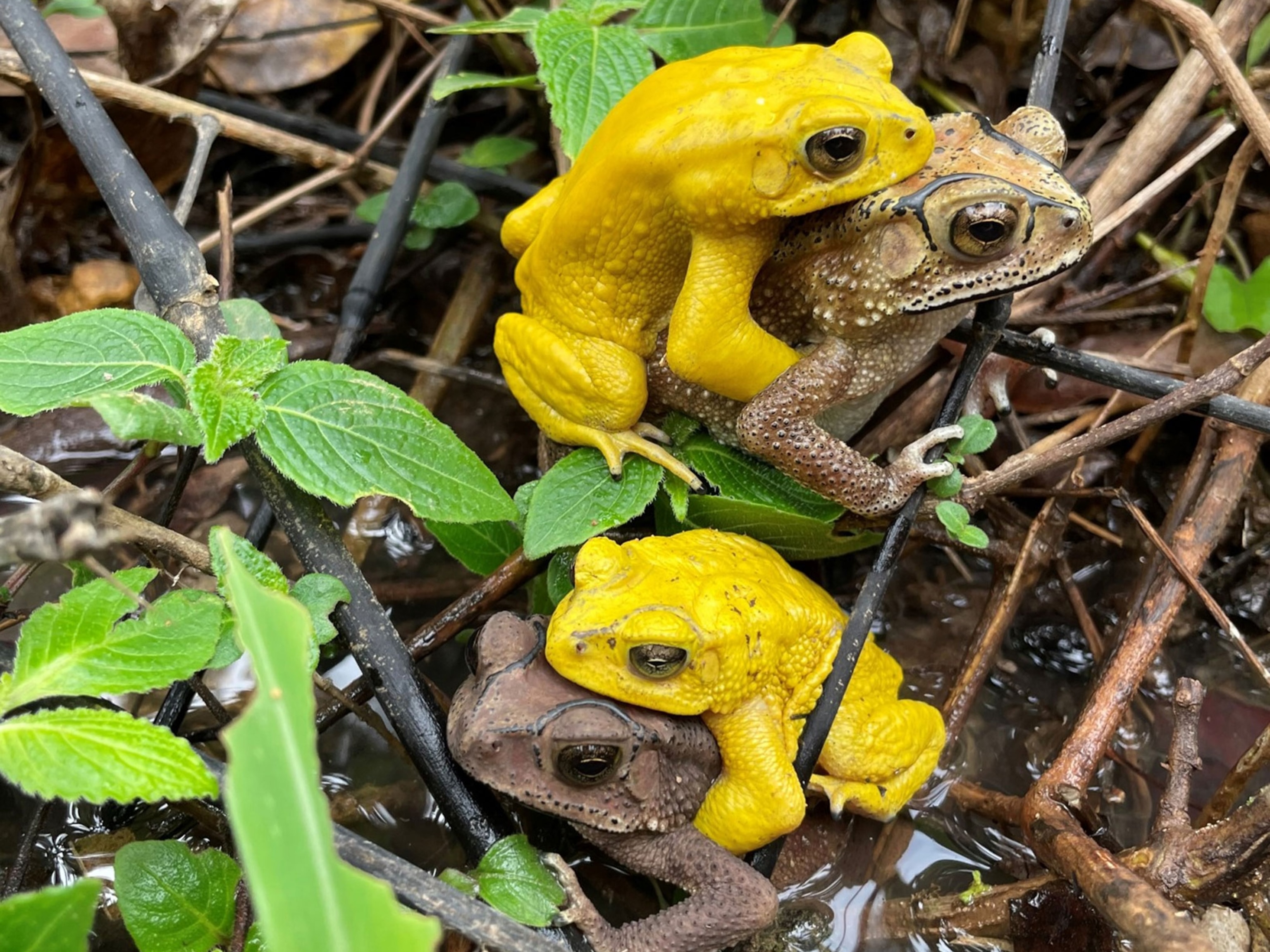
'Extinct' Toad Rediscovered in Ecuador
To biologists’ delight, the Azuay stubfoot toad, believed to be extinct after its last sighting in 2002, has just leapt back to life.
To biologists’ delight, the extinct Azuay stubfoot toad has just leapt back to life in Ecuador.
Three independent teams of scientists were involved in the rediscovery of a small group of the toads living in mountain forests near Cuenca (map)—and most crucially, the newfound amphibians haven’t shown signs of chytrid, a deadly fungus that was blamed for their demise nearly 15 years ago.
The Azuay stubfoot toad rediscovery is particularly meaningful, since it was the first species in Central and South America confirmed to be infected by the now-widespread chytrid fungus.
These orange-to-olive colored toads (Atelopus bomolochos) were hit hard by the fungus that, combined with other factors, has devastated amphibian populations and pushed many toward extinction in the last 25 years. (Read about vanishing amphibians in National Geographic magazine.)
“Harlequin toads [the general term used for the genus Atelopus] are the equivalent of dodos or Tasmanian wolves,” says Juan Manuel Guayasamin, director of the Research Center on Biodiversity and Climate Change at Indoamerican University in Quito.
“We know they were abundant at some point in history,” Guayasamin says.
And then, they weren’t. “From time to time someone says they saw one, but it’s always a mistake. Until now.”
The Hopping Dead
An animal is believed extinct when “there is no reasonable doubt that the last individual has died” after exhaustive surveys in known or expected habitat, according to the International Union for Conservation of Nature.
“Atelopus bomolochos are diurnal [active during the day], brightly colored, and were common, so their sudden disappearance was noted not only by scientists but by locals,” says Guayasamin.
So deciding the species was gone for good, when it became impossible to find after 2002, “wasn’t a case of poor sampling or rarity.”
Second Comings
Though extinction may sound final, amphibians have returned from the dead before.
A few efforts to find critically endangered survivors have proved successful. In 2014, for example, two populations of the South Pacific streamside frog turned up in Costa Rica, a country rich in rediscoveries. (Also see "'Extinct' Amphibians Rediscovered After Nearly Half a Century.")
And in 2010, 15 rediscoveries (plus two new-to-science species) resulted from a sustained search for a hundred species biologists believed might still exist in small pockets of their original ranges.
That included two “extinct” African frogs and a lost Mexican salamander, plus six species in Haiti that hadn’t been seen in 20 years.
Still Fragile
Of course, even if the newfound stubfoot toads don't have chytrid, amphibian survival is never assured.
Not much is known about the rediscovered toad’s biology except that breeding is no quick task. “Couples are very stubborn when it comes to reproduction,” Guayasamin says.
They do it in streams and “amplexus [their sexual position, with the female carrying the male on her back] can last for more than a month, during which time the male doesn’t eat.”
The female may lay hundreds of eggs, but those are then vulnerable to predators, including non-native trout that can quickly swallow up the whole batch.
Other than chytrid, habitat destruction remains the biggest threat to Atelopus species and other Central and South American amphibians. The fast growth of oil-palm plantations in particular has many experts very concerned, and climate change is also worrisome.
So, while finding a lost species offers hope, the obstacles to keeping it from disappearing for real are Herculean.
“The most complicated part is ahead of us, figuring out what to do the ensure the persistence of the discovered population” in a country whose wild places are being radically transformed, Guayasamin says.
“It requires funding, collaboration among universities, government, and research centers,” and a continuous battle over how to live side by side with wildlife while taking advantage of the country’s natural resources.
It’s not easy, he says, but “every rediscovery gives us a second chance to do things right.”
Numerous groups participated in the frog's rediscovery, including the conservation group Tropical Herping; Amaru Zoo in Cuenca, Ecuador; and Indoamerican University. The initial sighting was reported by scientists from Ecuador's Ministry of Environment and the University of Azuay in Cuenca.





